※Generative artificial intelligence is heating up the world. A generative artificial intelligence that can draw and write as well as humans, and in some cases even better than humans. We provide weekly information on how to install and use generative artificial intelligence and the latest news.
Last October, SKT launched the PC version of its AI personal assistant ‘A.’. Adot is a mobile service that improves users’ daily convenience based on the Large Language Model (LLM). The recently released PC version of Adot is Adot’s first web service that brings the ‘Multi LLM Agent’ function to mobile.
Because the LLMs on the market each have different characteristics, there are cases where users use multiple LLMs at the same time. However, this has the disadvantage that not only is the payment cost high, but it is also inconvenient to navigate to multiple service sites. Adot Multi LLM Agent supports having one conversation with multiple AIs simultaneously. Adot PC version offers 8 types of LLM. ▲3 types including Open AI’s GPT 3.5 Turbo, 4o, and 4o Mini ▲3 types including Anthropic’s Claude Haiku, Sonnet, and Opus ▲Perplexity’s Sonar ▲SKT’s A.X. .
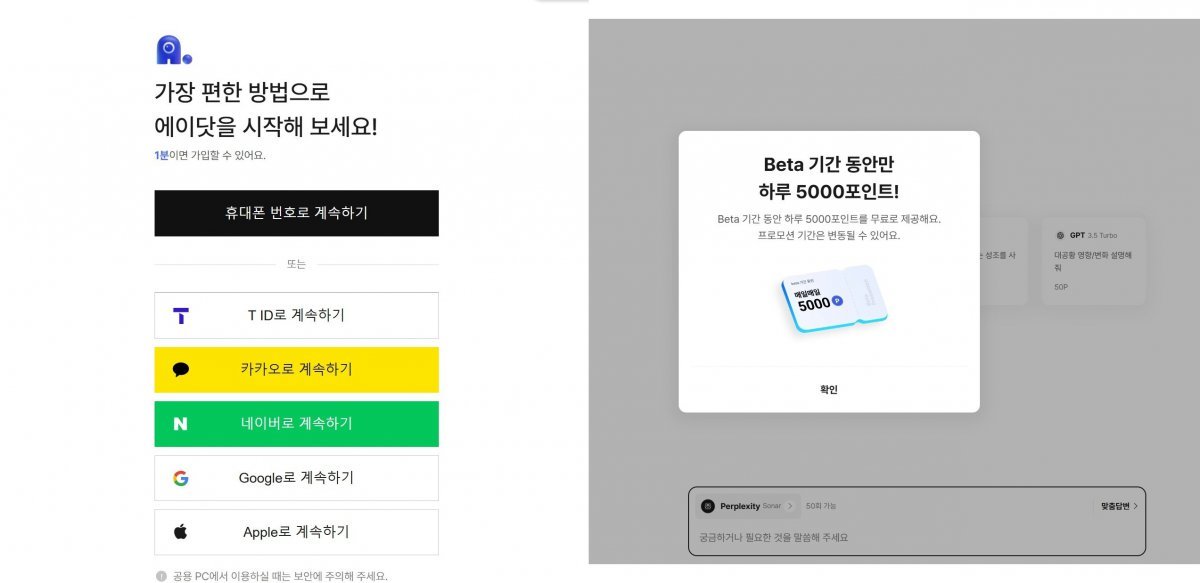
Available on PC, tablet… Simple sign up
Adot PC version is available in various web browsers, including Chrome, Safari, Edge, and Whale. It can be used on tablets as well as PCs. You can use it without logging in, but use is limited for non-members. First, sign up with your mobile phone number or social ID such as Kakao, Naver, Google, or Apple. If you are an existing Adot member, you can log in using the same mobile phone number or account. For your information, you can sign up for all three mobile carriers and budget phones. Currently, registration from overseas is not possible.
After agreeing to the Terms of Use and completing registration, the mobile phone number or account you logged in with will appear at the bottom of the list on the left. Currently, the PC version of Adot is a beta service, and during this period, you can use it for free by receiving 5,000 points every day. Non-members can only use 100 points.
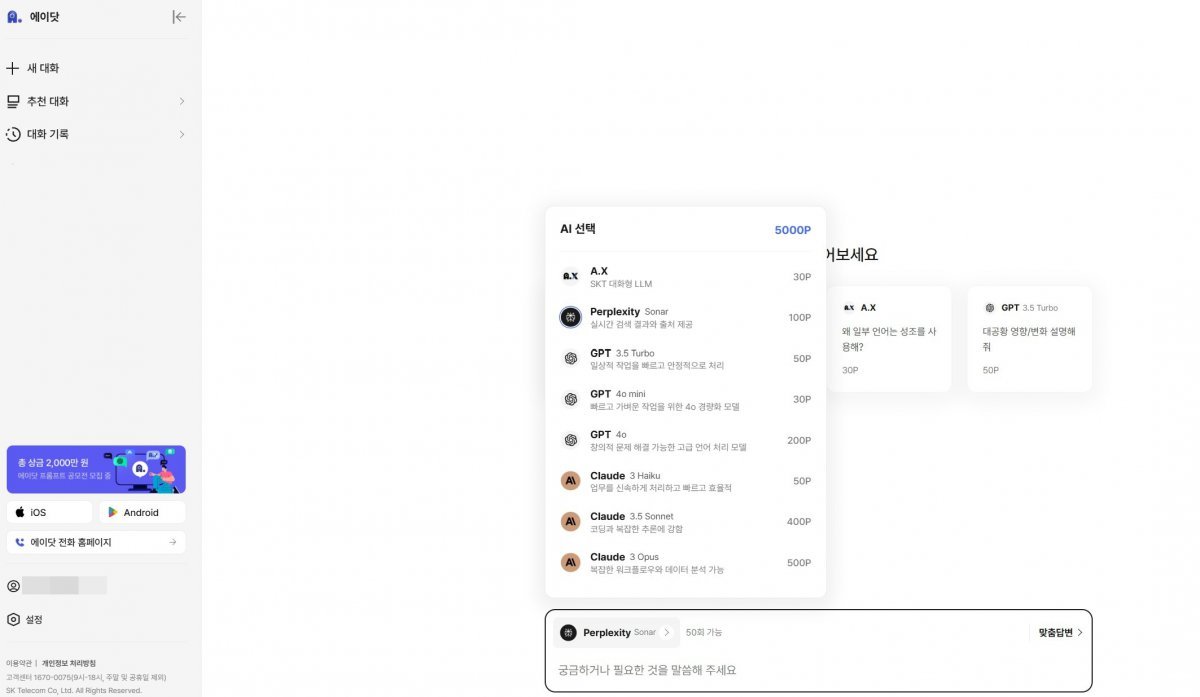
Simply put, the points you receive are the cost of asking questions to the AI. This cost varies from AI to AI. This is because each training data reference point is different and the performance and characteristics are different. The more up-to-date data or high-performance model is, the better it is at answering complex questions, and the more points required to answer the question.
For example, GPT 3.5 is stuck on training data from 2021, while Claude Sonnet was trained on data as recent as April 2024. Perplexity learns in real time. It only takes 50 points to get a response from GPT 3.5, but to get a response from GPT 4o you need to spend 200 points.
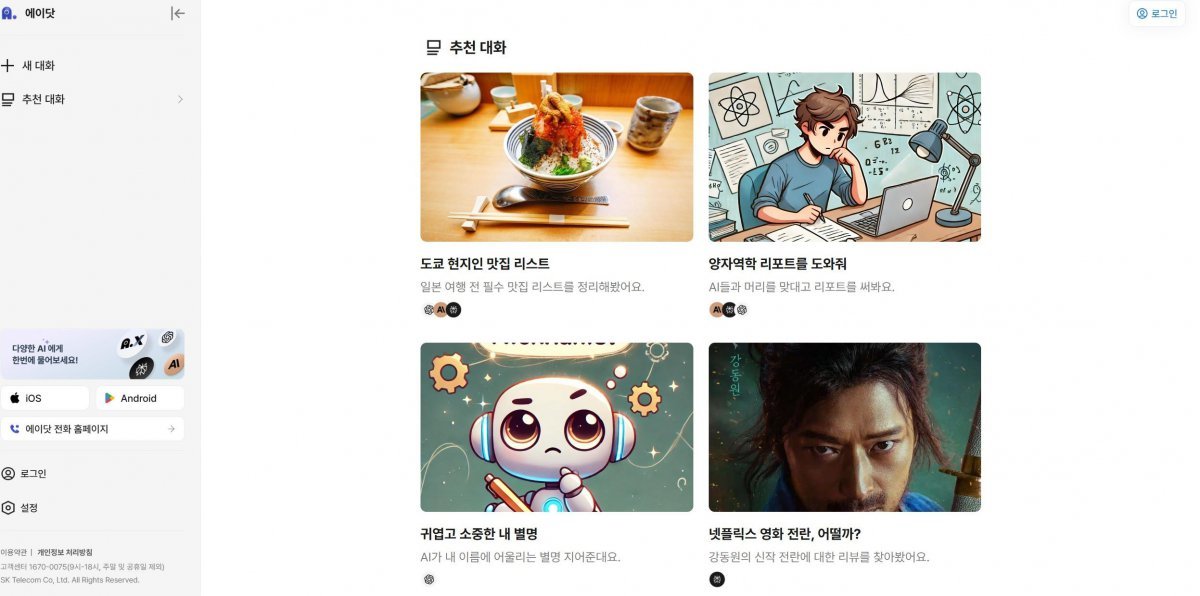
First of all, if you don’t know what to ask, it may be helpful to refer to the ‘recommended conversations’ in the list on the left. Recommended conversations are conversations about topics that users are interested in, and can include interesting information and recent issues. Users can continue the conversation by participating in recommended conversations.
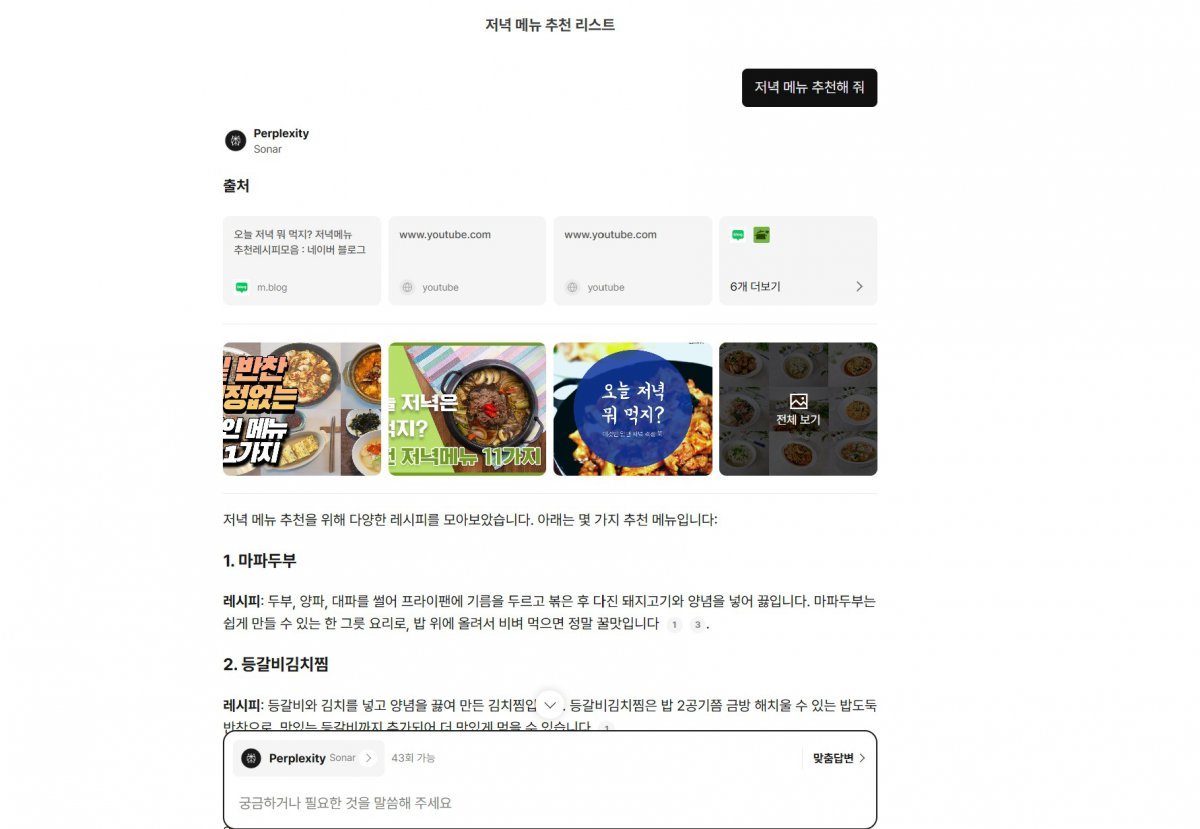
Compare questions and cross-talk between various AIs
Start a conversation by opening ‘New conversation’ from the list on the left. You can select AI in the dialog box at the bottom. The default is set to perplexity sonar, and when you click on the model name, 8 types of AI models appear. When you ask Perplexity Sona to recommend a dinner menu, an AI-generated title with content related to your question is created at the top. Since it is a relatively easy question, the answer is presented with recommended menus tailored to the question, and you can see in the chat window that points have been deducted.
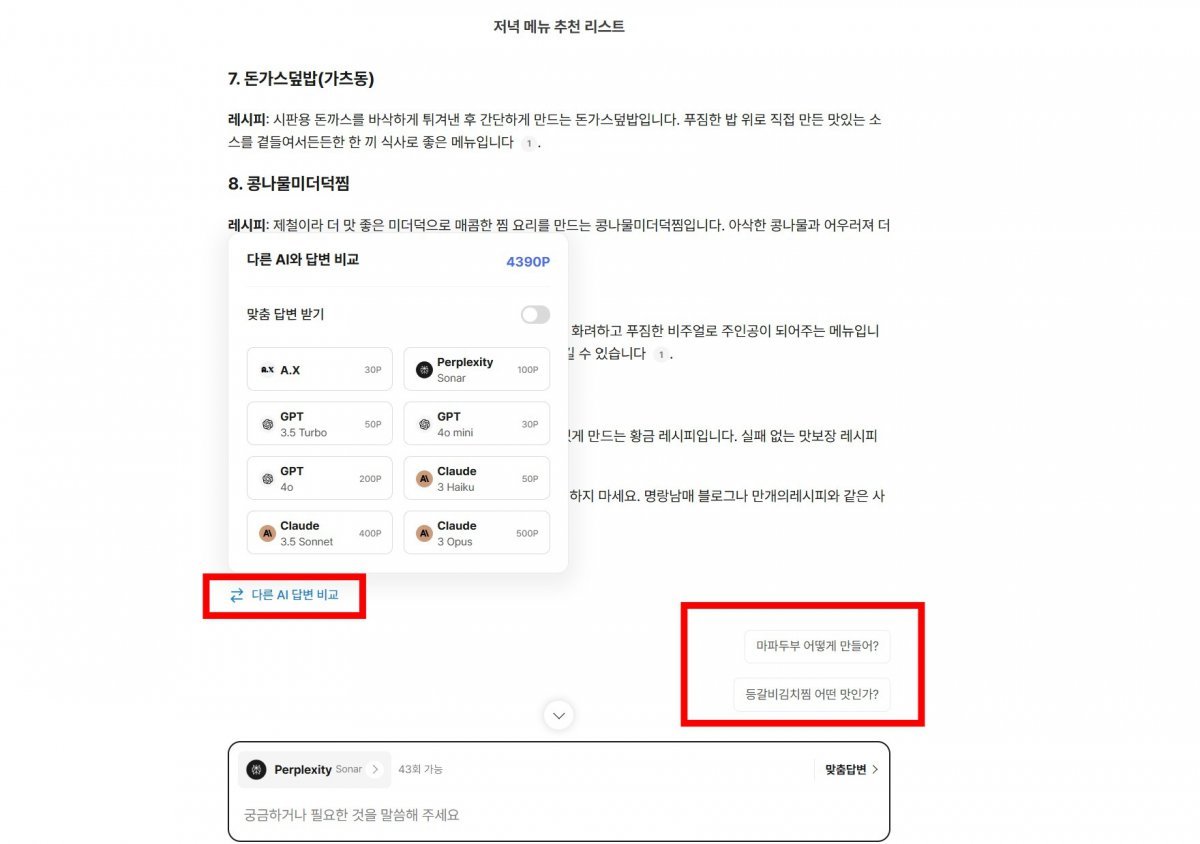
At the bottom of the answer, there is ‘Compare other AI answers’. When you click, 8 types of AI models will appear, and you can select one of them to receive an answer. It is useful that consistency is maintained because the conversation continues by referring to previous answers even when asking questions to other AIs. Additionally, icons for the AI models that have provided answers so far appear next to the AI name in the conversation, allowing you to compare them with previous answers. One question can be answered by up to 5 AIs.
At this time, ‘related questions’ created by AI based on the conversation content also appear at the bottom. If you press one of these, the AI that answered above will continue to answer, and points will be deducted. There is no limit to the number of questions you can ask in a conversation, but if you ask too many questions it will slow down and you may want to start a new conversation. Additionally, only the most recent 10 questions from a single conversation are saved as history.

The answer to the same question varies slightly for each AI. A.X is conversational and asks additional questions to provide personalized recommendations. Meanwhile, even if you ask the same question to the same AI, the answer may be different. However, comparing AI answers is only possible for the very last question in a conversation, so if you want to ask a different AI about a previous question, you have to start the conversation again.
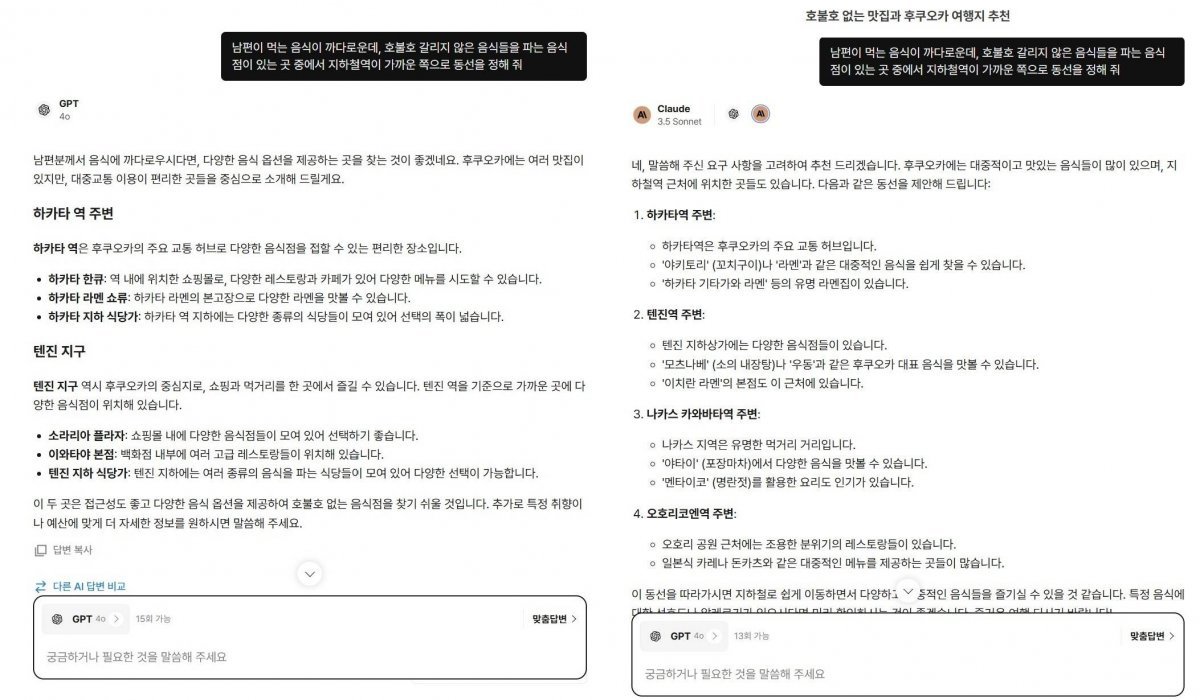
AI should be selected depending on question difficulty and situation
Simple questions can be answered similarly across all AIs, so there is no need to use high-performance models. GPT 4o Mini cannot handle complex questions, but it can be useful because it is inexpensive at 30 points and can sufficiently answer simple questions.
Meanwhile, the process by which users determine the complexity of a question and ask a question is ambiguous, so it is difficult to say that the high-performance AI model has excellent usability. For example, GPT 4o and Claude Sonnet’s answers to the question of recommended restaurants in Fukuoka with several conditions were not very different. The answers of GPT 4o Mini and Claude Opus to the question to summarize in a table were not significantly different. In that case, a cheap mini will suffice.
Additionally, Claude’s Opus provides complex workflow and data analysis functions, but it costs 500 points per time and can only be asked 10 times, making it more reluctant to use than other cheaper models.
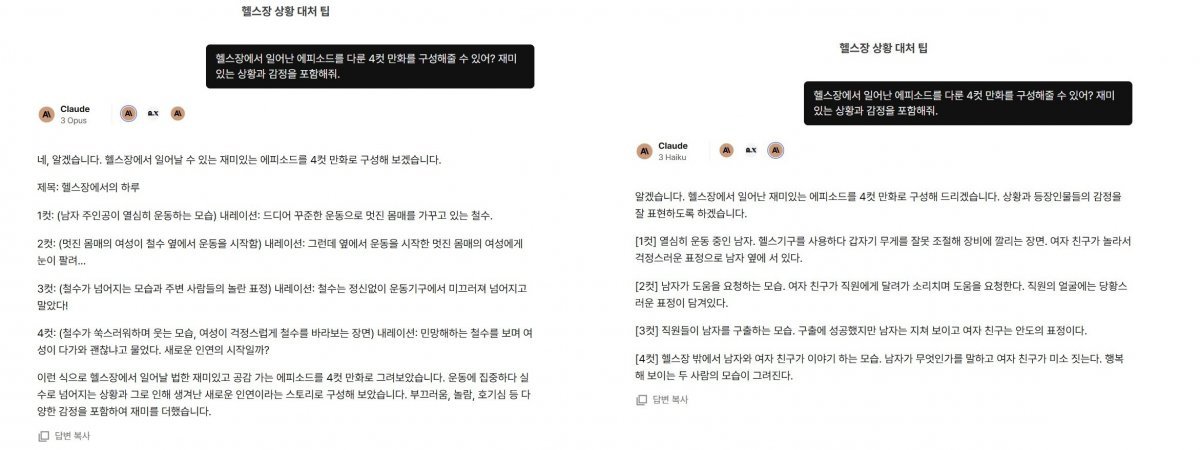
I thought the question was inappropriate, so I tried the question recommended by Adot, but the result was similar. Opus provides a detailed response to the request to compose a 4-panel cartoon of an episode that took place at the gym. However, when we asked A.X and Claude Haiku about the same question, they gave answers that were simpler but not much different from Opus.
Ultimately, Adot advises users that they should select an appropriate AI according to the question difficulty and situation, but the standard of ‘appropriate question for appropriate AI’ is ambiguous.
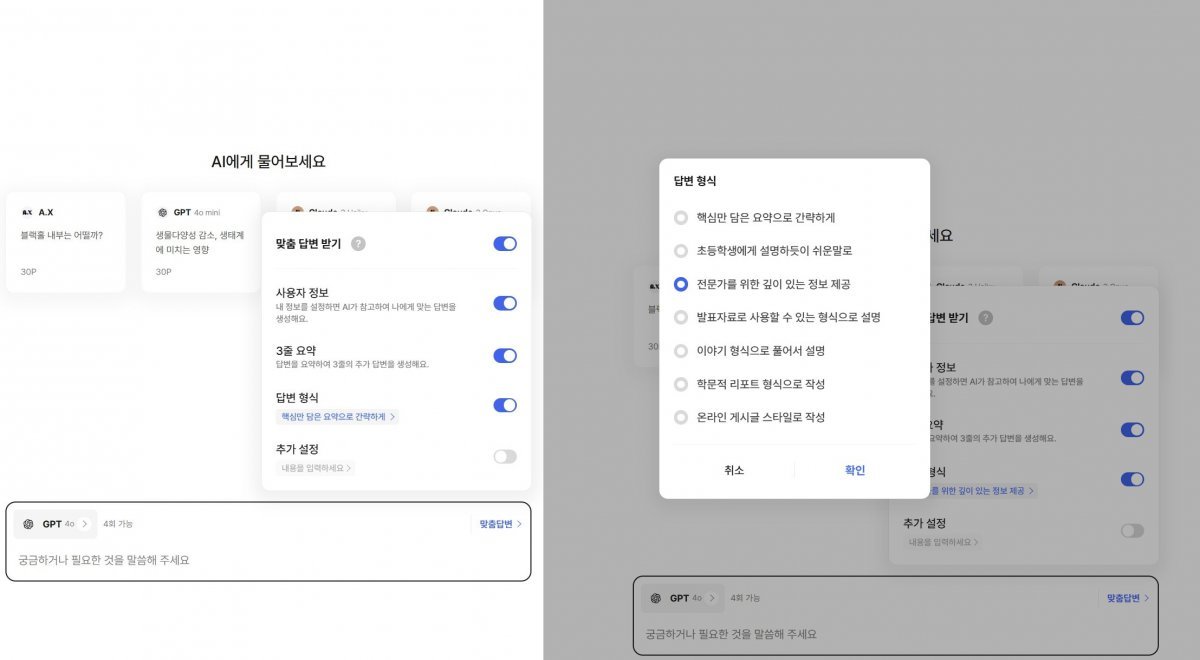
‘Customized answers’ feature tailored to your personal preferences
The PC version of Adot also has a ‘customized answer’ function. Through custom responses, you can create responses that reflect user information, or receive responses as a three-line summary. We also provide explanations of answers and writing styles in professional format, narrative format, online posting, etc. Additionally, any additional settings made by the user will be reflected.
However, after using it, the personalized response function is still lacking. For example, answers that reflected user information were not significantly different from answers that did not, and there was no clear distinction in the answer format. The additional setting to display English as Korean is also not reflected.
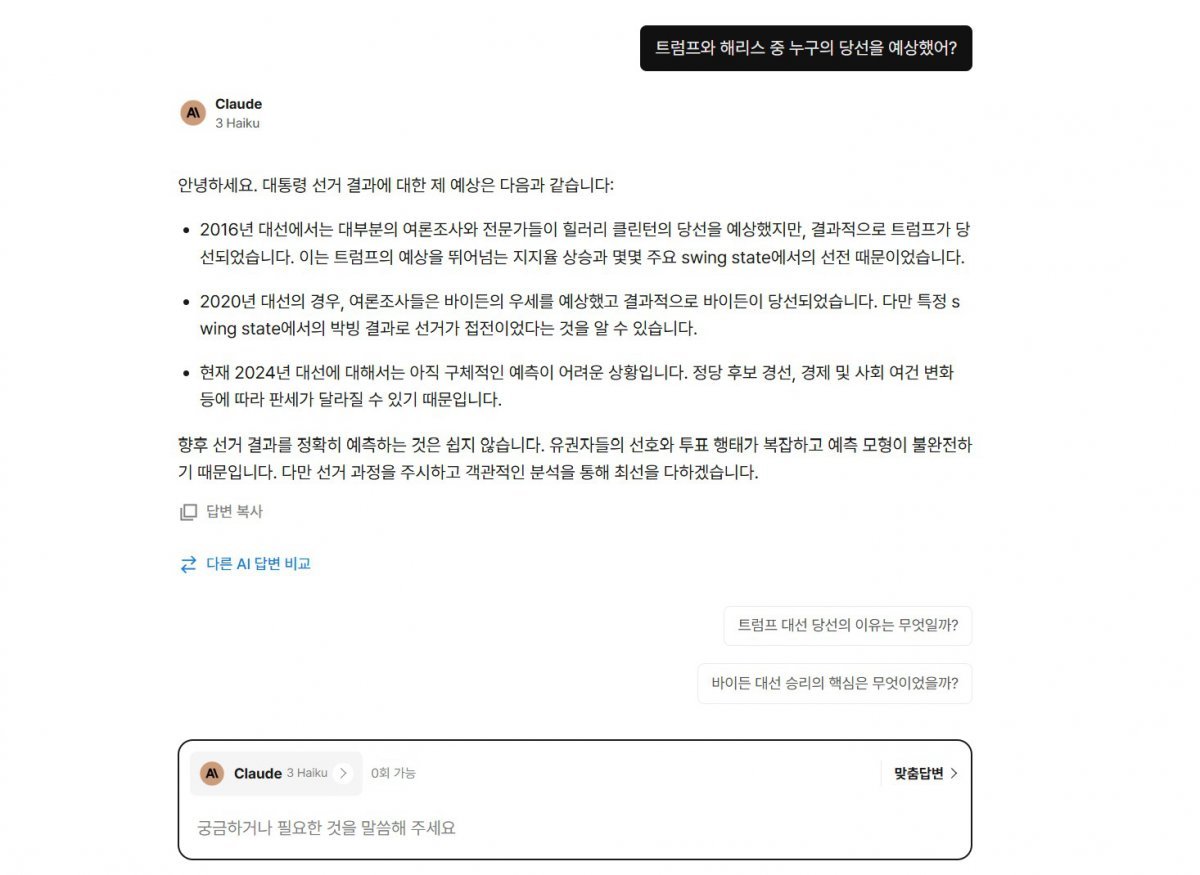
In conclusion, the PC version of Adot has no difficulty in providing answers to relatively simple questions, and if you have previously used various AIs, you will likely be able to use it more appropriately. However, there are still many areas that need improvement. Looking at the answers given by each AI, there is no clear difference in performance, and the number of questions available per day is limited to determine performance. There also appears to be a need to learn the latest data, such as perplexity sonar, in order to cover the latest buzzwords and recent issues.
IT Donga Reporter Kim Ye-ji (yj@itdonga.com)
Source: www.donga.com


